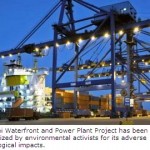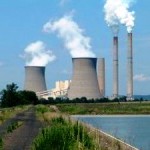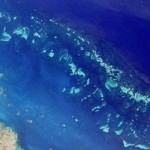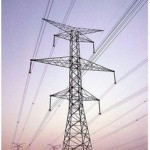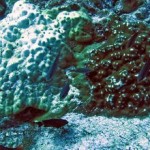The Pollutants Assessed
Black carbon is a major component of soot and is formed from the incomplete combustion of fossil fuels, wood and biomass. Key sources include emissions from cars and trucks, cook-stoves; forest fires and some industrial facilities. It affects the climate by intercepting and absorbing sunlight and darkens snow and ice when deposited, while also influencing cloud formation. It is also a health hazard.
Tropospheric ozone is a major component of urban smog, is a powerful greenhouse gas and air pollutant harmful to human health and ecosystems. The threefold increase in concentrations in the northern hemisphere in the past 100 years has made it the third most important global greenhouse gas.
Tropospheric ozone is formed from other gases including methane, which is itself a potent greenhouse gas emitted from sources such as waste tips, livestock and the oil and gas industry.
How the Study was Carried Out
Both black carbon and the gases that form tropospheric or ground level ozone are typically co-emitted with other gases and particles, some of which cause warming and others that cause cooling.
A relatively small selection of policy measures were chosen from around 2,000 separate measures. The impact of measures likely to reduce global warming, which have a large potential for emission reductions and provide air quality and other benefits were modeled out to 2070.
Measures for Significantly Reducing Black Carbon and Ground Level Ozone
Nine actions are pin-pointed in the assessment for black carbon, all of which could be undertaken including:-
- Diesel particle filters for vehicles as part of combined standards on vehicle emissions and fuels
- Replacing wood burning stoves in developed countries with pellet stoves and boilers using fuel from recycled wood and sawdust
- Clean-burning biomass stoves for cooking and heating in developing countries
- Banning open burning of agricultural wastes
- Replacing traditional brick kilns with vertical shaft and Hoffman kilns
Seven actions are pinpointed for addressing ground level ozone which hinge on addressing methane emissions including: –
- Encouraging composting and other measures to curb organic wastes going to landfill
- Upgrading water treatment works to include gas recovery
Measures to cut methane emissions from the coal, oil and gas industries, including: –
- Cutting leaks from long distance gas pipelines
- Promoting anaerobic digestion of manure from cattle and pigs
- Intermittent aeration of continuously flooded paddy fields
Notes:
Key Findings from the Integrated Assessment of Black Carbon and Tropospheric Ozone Assessment in Detail
Without measures to curb climate change emissions, temperatures are projected to rise on average by a further 1.3 degrees C by mid-century “bringing the total warming from pre-industrial levels to about 2.2 degrees C.
Arctic
“Near term warming may occur in sensitive regions and could cause essentially irreversible changes such as loss of Arctic land-ice, release of methane and CO2 from Arctic permafrost and species loss,” says the assessment. “Reducing the near-term rate of warming; hence, decreasing the risk of irreversible transitions that could influence the global climate system for centuries,” it adds.
Fully implementing the measures outlined in the assessment in respect to black carbon, tropospheric ozone and methane could roughly halve (around 0.5 degrees C) the projected global temperature rise between now and the 2030s. Such measures could reduce warming in the Arctic by around 0.7 degrees C in 2040, or roughly two-thirds of the estimated warming
Glaciers
Cutting black carbon levels in high mountain regions such as the Himalayas and the Tibetan Plateau could slow the melting rates of glaciers – in part because soot deposits increase the absorption of sunlight – and reduce the risk of the formation of glacial lakes and associated catastrophic outburst floods.
In the high valleys of the Himalayas, for example, black carbon levels can now be as high as in a mid-sized city.
Impacts on the Asian Monsoon and Africa Rainfall
Increasing concentrations of particles like black carbon may also affect the timing and patterns of the Asian monsoon with important implications for “human well-being because of changes in water supply and agricultural productivity, drought and flooding,” says the assessment.
Implementation of black carbon measures could also lead to a considerable reduction in the disruption of traditional rainfall patterns in Africa.
Health Benefits
Ground-level ozone and fine particles, including black carbon, are linked with premature deaths, primarily heart disease and lung cancer alongside other illnesses such as bronchitis and low birth weight.
Implementing the recommended measures would benefit public health especially in Asia and also in Africa.
Crop Benefits
Both ground-level ozone and black carbon can affect the health, growth and productivity of crops, trees and other plants.
Implementing the measures to reduce methane, and thus, ground-level ozone would assist in avoiding annual yield losses of about 25 million tonnes of four staple crops. Significantly curbing black carbon emissions would account for a further 25 million tonnes of avoided crop losses annually.
Check the following link for the Summary for Decision Makers and Full UNEP/WMO Integrated Assessment of Black Carbon and Tropospheric Ozone Report:
http://www.unep.org/dewa/Portals/67/pdf/BlackCarbon_SDM.pdf
Source: UNEP.
[Photo: Traditional brick kilns in South Asia are a major source of black carbon. Improved kiln design in this region is significantly reducing emissions. (Photo Credit: Credit: Kevin Hicks)]


